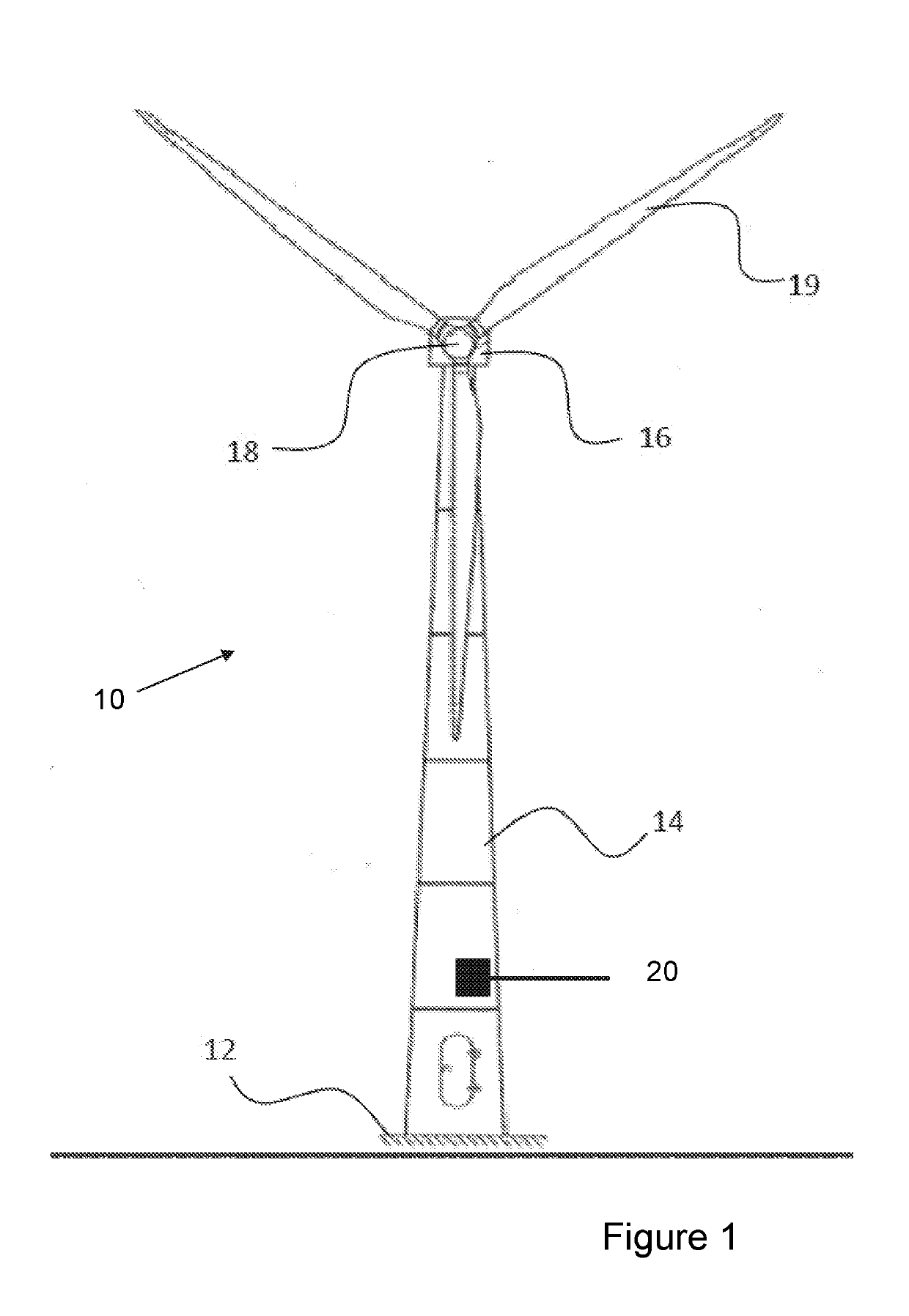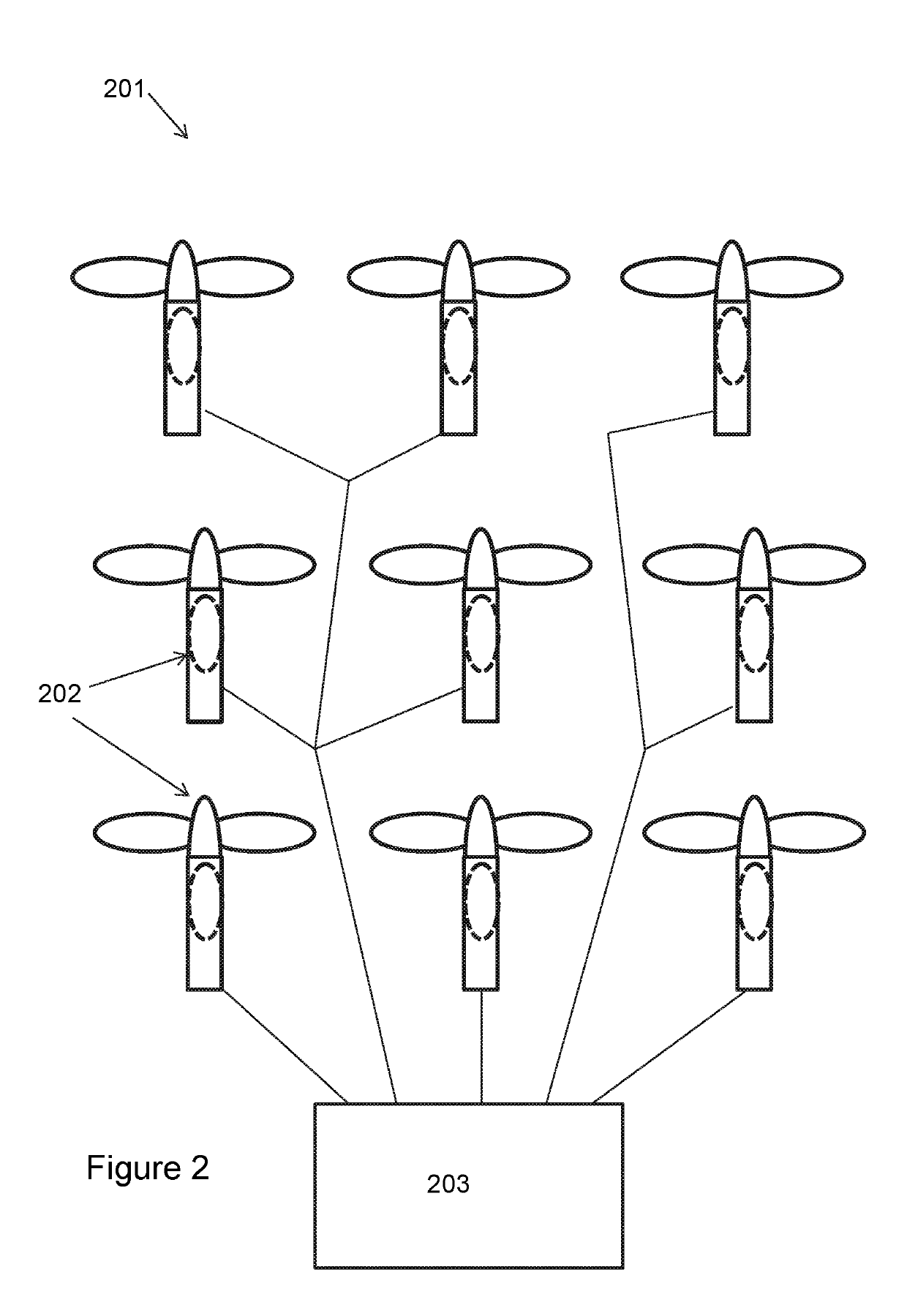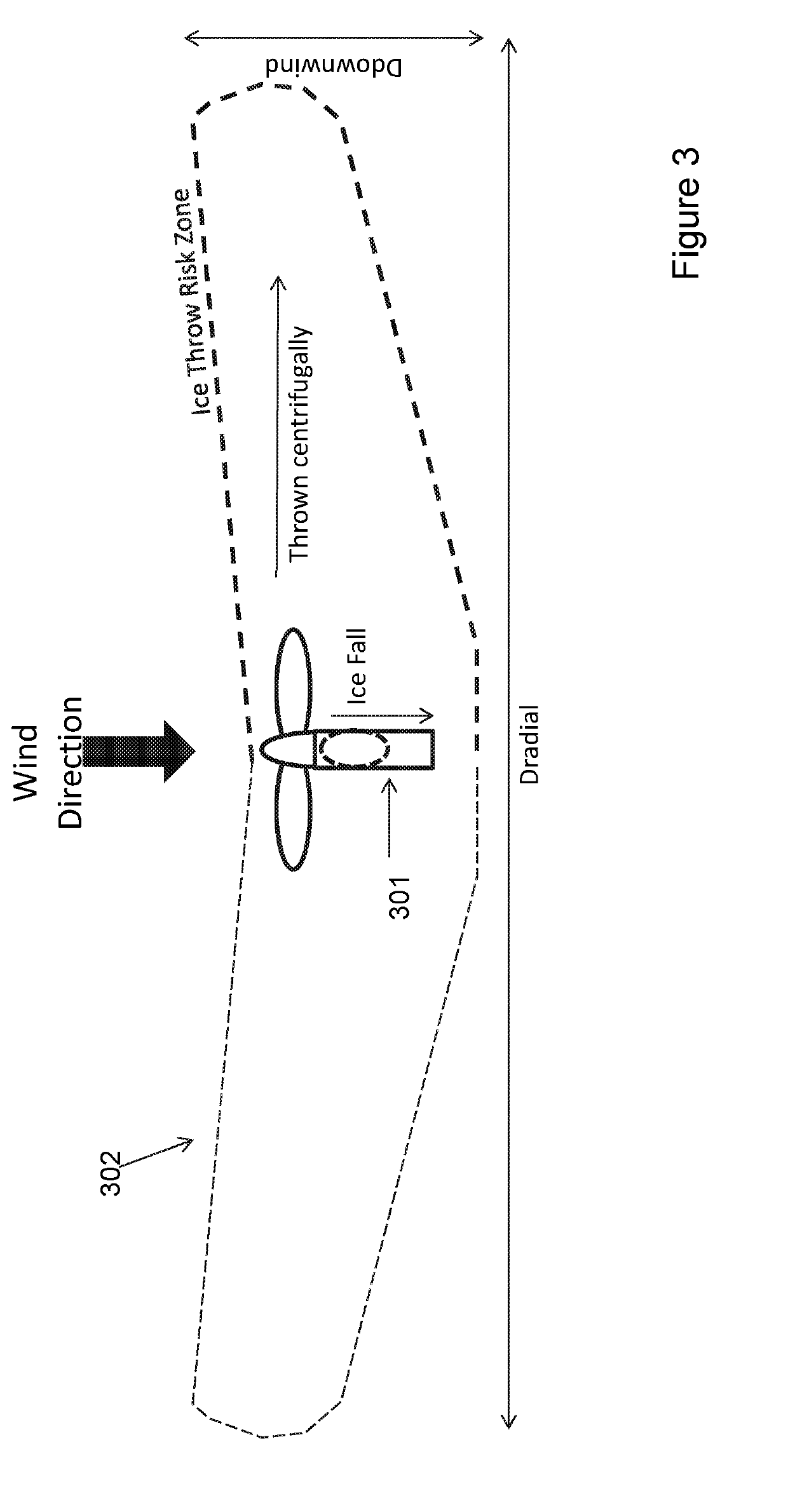Improved wind turbine safety system
a wind turbine and safety system technology, applied in the direction of wind turbines, mechanical equipment, machines/engines, etc., can solve the problems of ice accumulation, ice throw, undesirable consequences, etc., and achieve the effect of reducing the risk zone of ice throw
- Summary
- Abstract
- Description
- Claims
- Application Information
AI Technical Summary
Benefits of technology
Problems solved by technology
Method used
Image
Examples
Embodiment Construction
[0033]FIG. 1 shows a schematic of a typical wind turbine 10. The wind turbine 10 is mounted on a base 12 which may be onshore foundations or off-shore platforms or foundations. The wind turbine includes a tower 14 having a number of tower sections. A nacelle 16 is located and attached to the top of tower 14. A wind turbine rotor, connected to the nacelle 16, includes a hub 18 and at least one wind turbine blade 19, where in FIG. 1 three wind turbine blades are shown although any number of wind turbine blades 19 may be present depending on the design and implementation of the wind turbine 10. The wind turbine blades 19 are connected to the hub 18 which in turn is connected to the nacelle 16 through a low speed shaft which extends out of the front of the nacelle 16. The wind turbine 10 typically includes a wind turbine controller 20 which may be located within the wind turbine, e.g. in the hub 18, in the nacelle 16, in the tower 14, or any other suitable location within or near the wi...
PUM
 Login to View More
Login to View More Abstract
Description
Claims
Application Information
 Login to View More
Login to View More - R&D
- Intellectual Property
- Life Sciences
- Materials
- Tech Scout
- Unparalleled Data Quality
- Higher Quality Content
- 60% Fewer Hallucinations
Browse by: Latest US Patents, China's latest patents, Technical Efficacy Thesaurus, Application Domain, Technology Topic, Popular Technical Reports.
© 2025 PatSnap. All rights reserved.Legal|Privacy policy|Modern Slavery Act Transparency Statement|Sitemap|About US| Contact US: help@patsnap.com



